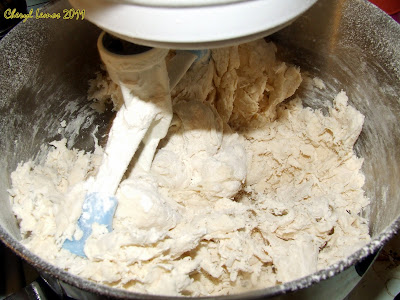If you have a cat, you know that sometimes they bless you with a coughed up mass of fur. Of course, if your cat is a fastidious groomer, as most cats are wont to be, then they inevitable swallow fur as they are cleaning themselves. Most times the fur passes through their system uneventfully, but occasionally the furball must be regurgitated. From a kitty this is to be expected . . . from a person? Well, that I whole other head of hair.
True story . . . there was a healthy 18-year-old woman who, for five months, had swelling in her belly, vomiting after meals . . . so far it sounds like an unwanted pregnancy except for the 40-pound weight loss. A scan indicated a large mass in the woman’s abdomen. To further investigate the mass the doctor lowered a scope down her esophagus. The scope revealed "a large bezoar (1) occluding nearly the entire stomach”.
Further consultation uncovered that the patient had a habit of eating her hair. Apparently, she had been doing this for a number of years. After attempting to extract the mass through small incisions, they had to open her abdoming to remove the foreign body. The result was the removal of a huge mass “of black, curly hair, which weighed 10 pounds and measured 15 inches by 7 inches by 7 inches”; about the size of a large newborn.
A year after the surgery the pain and vomiting were gone and she had gained 20 pounds and had stopped eating her hair.
Hair eating is a mental illness called trichotillomania, a compulsive disorder in which the patient pulls her hair out and, in some cases, eats it. However, more than half the people who have this condition don’t eat their hair and the disorder mainly results in embarrassing bald patches.
Yeah, I know it's gross . . . but if I must suffer with this knowledge, so must you all. ENJOY!!
______________________________
Bread Soup Bowls
2 (.25 Ounce) Packages Active Dry Yeast
2 1/2 Cups Warm Water
2 Teaspoons Salt
2 Tablespoons Vegetable Oil
7 Cups All-Purpose Flour
Cornmeal
1 Egg White
1 Tablespoon Water
In a large bowl, dissolve yeast in warm water. Let stand until creamy, about 10 minutes.
Add salt, oil and 4 cups flour to the yeast mixture; beat well. Stir in the remaining flour, 1/2 cup at a time, beating well with an electric mixer at medium speed after each addition.
When the dough has pulled together, turn it out onto a lightly floured surface and knead until smooth and elastic, about 6 minutes. Lightly oil a large bowl, place the dough in the bowl and turn to coat with oil. Cover with a damp cloth and let rise in a warm place until doubled in volume, about 40 minutes.
Punch dough down, and divide into 8 equal portions. Shape each portion into a 4 inch round loaf. Place loaves on lightly greased baking sheets sprinkled with cornmeal. Cover and let rise in a warm place, free from drafts, until doubled in bulk, about 35 minutes.
Preheat oven to 400 degrees F (200 degrees C). In a small bowl, beat together egg white and 1 tablespoon water; lightly brush the loaves with half of this egg wash.
Bake in preheated oven for 15 minutes. Brush with remaining egg mixture, and bake 10 to 15 more minutes or until golden. Cool on wire racks.
To make bowls: Cut a 1/2 inch thick slice from top of each loaf; scoop out centers, leaving 3/4-inch-thick shells.
Fill bread bowls with hot soup and serve immediately.













Tidak ada komentar:
Posting Komentar